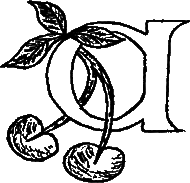
Apricot Folk - Country Dancing
Country Dancing Terms Explained
A Brief History of Country Dancing
Country Dancing Terms Explained
| ARCHES | |||
|
Partners hold nearest hand (or join right hands) and raise to make a single handed arch Partenrs, hold both hands and raise to make a two handed arch Lines join hands along the line and raise to make a line of arches (as in the blue line in the picture) |
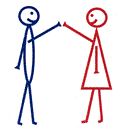 single handed arch 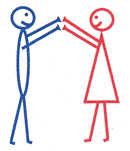 two handed arch 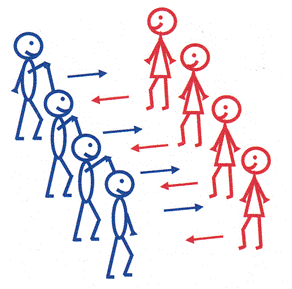 lines arch |
||
|
ARMING Partners face and link R arms (or use elbow hold) to do a full turn to the right and finish in starting places Partners face and link L arms (or use elbow hold) to do a full turn to the left and finish in starting places This is a move which features a lot in 18th Century (Playford) dances |
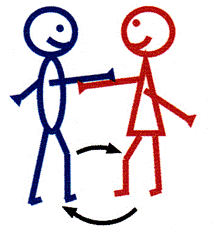 arm right |
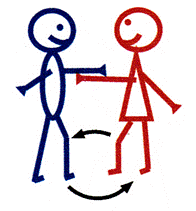 arm left |
|
|
BALANCE Partners face hop on to L foot twice, kickng R leg across then hop on to R foot twice, kicking L leg across. An alternative is SETTING when partners face and hop onto R foot, and then bring L foot to close followed by hopping onto L foot and bring R foot to close |
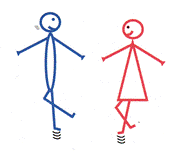 balance |
||
|
BASKET Two couples face each other. The boys put their arms around the girls' waists on either side and join hands The girls put their arms around the boys' shoulders on either side and join hands The whole set is then spun round to the left (only) and finishes with everybody back in original places This can also be formed by girls joining hands across, then boys joining hands across (above the boys hands). Boys then bring their joined hands up and back over the girls followed by girls bringing their joined hand up and back over the boys. This has to be done quickly to give enough time to spin the basket |
 basket |
||
|
CAST Top couple turn away from each other and go down the outside of their own line to progressed place, usually at the bottom of the set. (Picture shows couple returning up the middle to original places, having cast to the bottom). This is a SINGLE CAST . In a longways set the other dancers may follow them, or the couple may just cast one place |
 single cast |
||
|
In a DOUBLE CAST partners join hands in front ain a promenade hold. The top couple casts as a unit to the left (or right) to the bottom of the set and abck up to original places. Other couples follow, everybody finishing in original places |
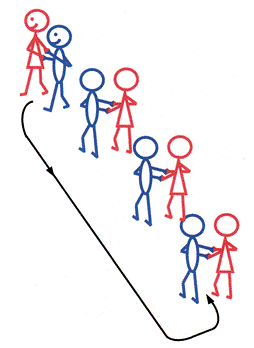 double cast to L |
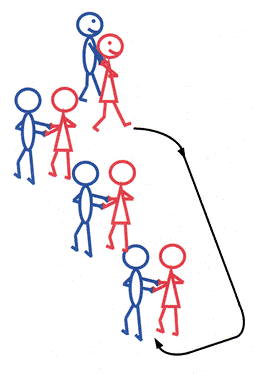 double cast to R |
|
|
CHASSAY Partners face each other and give 2 hands Partners step sideways to boy's L and girl's R for 2 (or more) steps |
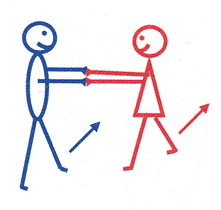 chassay |
||
|
CIRCLE All join hands in a circle and dance round to the L (or R) Dancers may face in the direction they are going and dance forwards or they may face into the centre and dance with a sideways step (known as a slip step) |
 circle L |
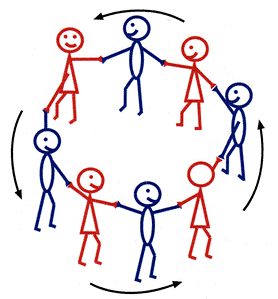 circle R |
|
|
DANCE AROUND A line dances allthe way round the facing line, led by the top dancer in that line. They will go round the top of the facing line, round the back and the back up to original places In a square set, dancing all the way round the set may be done by individual dancers |
 girls around the boys |
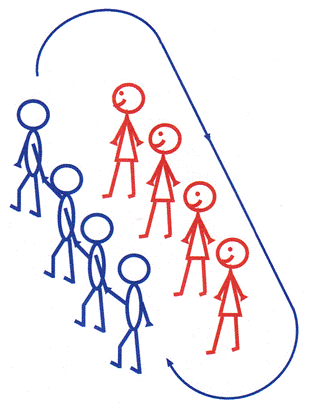 boys around the girls |
|
|
DIP AND DIVE This can be done by a SINGLE COUPLE as follows Top (1st) couple faces down, others all face up. All join nearest hand. Top (1st) couple changes place with 2nd couple by ducking under the 2nd couple arch, 1st couple changes place with 3rd couple by making an arch over them , 1st couple changes place with 4th couple by ducking under the 4th couple arch 1st couple changes place with 5th couple by making and arch over them |
 single dip and dive |
||
|
or it can be done as a WHOLE SET as
follows All take nearest hand with partner and face up to top couple (1s) who face down Top couple (1s) begin by ducking through arch made by the couple facing them (2s) to change places with them. 1s, arch over next couple (3s),duck under the 4s and over the bottom couple (original 5s) . At the same time, every other couple is travelling up and down the set alternately arching over or ducking under the approaching couple as appropriate On reaching then end of the set, couples turn around individually and go back into the set, usually by ducking under the approaching couple Continue until all back in starting places |
 whole set dip and dive |
||
|
DOSIDO Partners face each other and take 4 steps forward, passing right shoulders. Then reverse back 4 steps, passing left shoulders to finish in original places Usually better to take 3 steps forward, step R and 3 steps back to place Dosido can also be done starting by passing L shoulder first and reversing back passing R The common practice of doing this move with folded arms is NOT traditional and should not be done. (It is said to have been started by Butlin's Holiday Camps!) |
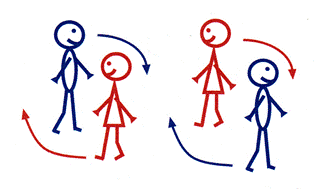 dosido R  dosido L |
||
|
GALOP Partners face each other and dance along the line of dance with sideways steps Many dances have the dancers returning to original place in the same way |
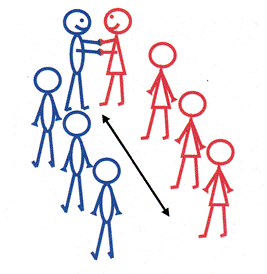 galop |
||
|
GRAND CHAIN All face partner and dance round the set in the direction you are facing - boys anticlockwise girls clockwise. As you go round, weave in and out of those coming towards you giving hands as you pass. Start by passing partner right, next left, next right, next left, next right, next left to face the next and so on It is important that dancers let go hands as soon as they have passed so that they are not tempted to turn round and dance back the way they came |
 grand chain |
||
|
HEY Top dancer faces down, others up Top dancer (passing right shoulder to start) weaves the line down to the bottom,and back to the top. Other dancers join in the weaving movement All 3 dancers weave the line at the same time to finish in original places The bottom dancer has to wait until the top dance faces him before he can start. On reaching the end of the set each dance turns R to pass the next dancer by the R. Heys can also be done by more than 3 dancers. Then the rule at the end is that if you passed the last dancer by the R, you turn R and go back ipassing R. If you passed the last dancer by the L, then turn L and go back in passing L |
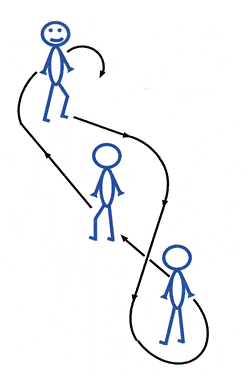 hey |
||
|
INTO THE MIDDLE AND BACK All face into the middle (centre) of the set and take hands 3 steps forwards towards the middle, bring feet together on 4th beat Reverse back to place 3 steps bringing feet together on 4th beat Done in a square set or a big circle LADIES CHAIN This is done by 2 couple facing each other Girls give R hand and pull by to change places Boys give L hand to approaching girl and help them round to put them on the R (boy is on the L) This makes a HALF LADIES CHAIN Girls give R hand and pull by to change places Boys give L hand to approaching girl and help them round to put them on the R (boy is on the L) in original places This makes a WHOLE LADIES' CHAIN |
 into the middle and back 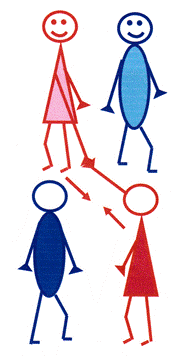 girls change by R 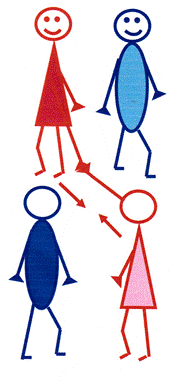 girls change back by R |
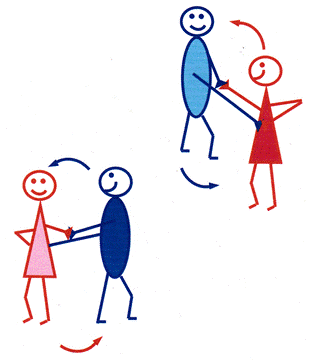 boys help girls around 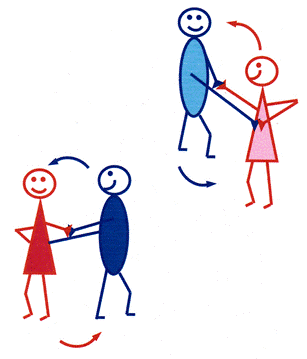 boys help their original patrner's place girls around |
|
|
LEAD UP AND BACK All face up and take nearest (inside) hands. Take 3 steps foward, pause for 1 beat and reverse back to place for 3 steps This is a common movement in 18th century (playford) dances as the introduction to the first figure. It is usually done twice when it is known as UP AND BACK A DOUBLE |
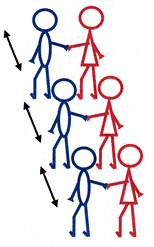 lead up and back |
||
|
LINES FORWARD AND BACK Hold hands along the line Lines lead forward 3 steps bring feet together on 4th beat Lines reverse back to place 3 steps bringing feet together on 4th beat |
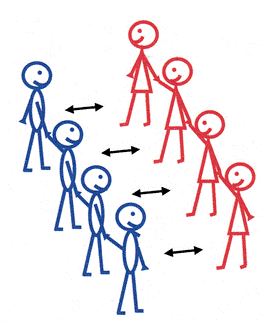 lines fwd & back |
||
|
PASS BY Partners face each other Partners move past each other passing R shoulder to face the next dancer POUSSETTE Partners give 2 hands, and the boy pushes the girl backwards for 3 steps, both bring own feet together on the 4th beat. The girls then pushes the boy backwards for 3 steps, bothe bringing feet together on the 4th beat (A poussette may return dancers to their original place, or it can be used in a longways set to progrees the couple up or down the set one place) |
 pass by  poussette |
||
|
PROMENADE Couple stand side by side facing the same direction. Join hands in front (boy's R to girl's R and boy's L to girl's L) Lead forward as a couple Usually done in an anticlockwise (ballroom) direction round a circle or square set (but also see DOUBLE CAST) |
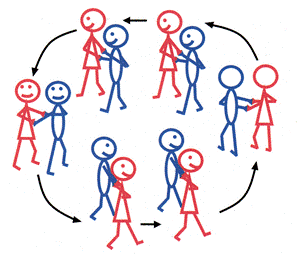 promenade |
||
|
REEL This is exactly the same as a HEY (q.v.) RIGHT AND LEFT THROUGH This is done by 2 couples facing each other Opposites give R hand and pull by to change places across the set Neighbours (along the line) give L hand and pull by to change places (All now on opposite side of the set and opposite their original place) These TWO CHANGES make HALF A RIGHT & LEFT THROUGH Opposites give R hand and pull by to change places across the set Neighbours (along the line) give L hand and pull by to change places (All now in original places) These FOUR CHANGES make a WHOLE RIGHT & LEFT THROUGH (Your neighbour is beside you, along the line and may or may not be your partner, depending on the dance. Your opposite is across the set from you and may or may not be your partner) |
 opposites change by R 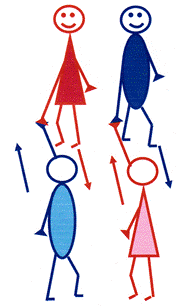 opposites change by R |
 neighbours change by L 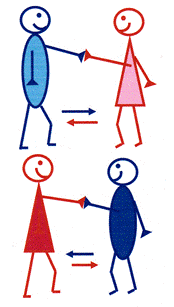 neighbours change by L |
|
|
SET RIGHT AND LEFT Partners face and hop onto R foot, and then bring L foot to close followed by hopping onto L foot and bring R foot to close |
 set R & L |
||
|
SET FORMATION The shape of a group of dancers for a particular dance. The most common forms are as follows: LONGWAYS This can be for 3,4,5,6 7 or 8 couples. It consists of a line of boys facing a line of girls. Partners are opposite each other. The end of the set nearest the music end of the room is the TOP of the set and the couple nearest at the top are also the 1st couple. Couples are then numbered in order down the set. When coupleS face the top of the set they are facing UP. The end furthest from the music is the BOTTOM of the set |
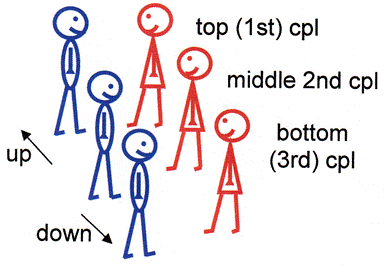 3 cpl longways |
 5 cpl longways |
|
|
LONGWAYS
FOR AS MANY AS WILL Any number of couples in a longways set, partners facing each other across the set Couples number alternately from top of set. (1st cpl, 2nd cpl, 1st cpl, 2nd cpl etc) The dance is done in 4s, each 1st couple dancing with the next (2nd) couple below At the end of one turn of the dance, all couples will have changed places, 1s moving one place down the set, and the 2s moving one place up Spare couples at the ends stand out one turn of the dance and come back in again for the next turn. those at the top will become 1s, those at the bottom, 2s Within the 4s, those on the R diagonal (1st boy & 2nd girl) are known as 1st corners; those on the Ldiagonal (2nd boy & 1st girl) are known as 2nd corners (A LONGWAYS IMPROPER set is one for as many as will, but the 1st couples have changed sides so the lines will alternate boy-girl, boy-girl. This is usually used for American Contra dances and individuals will dance with their NEIGHBOUR (also sometimes known as the corner) next to them along the line as well as their PARTNER across the set) |
 longways for as many as will |
||
|
SQUARE SET This consists of 4 couples, each stand on the side of a square and facing in. The couple with thier backs to the music end of the room are 1st couples and the remaining couple number anticlockwise 1st & 3rd couple are also know as HEAD couples: 2nd & 4th couples are know as SIDE couples The one you are standing next to who is NOT your partner is on the corner of the square and is your CORNER (eg 1st boy & 4th girl) The one across the set from you is the OPPOSITE (EG 1st boy & 3rd girl) and the one who is in the couple on your right is the RIGHT HAND one (eg 1st boy & 2nd girl - not your partner) |
 square set |
||
|
CIRCLE Any number oc couples standing side by side in a large circle, all facing in towards the centre Circle sometimes consist of couples standing round in a circle but with the boy on the inside facing his partner on the outside |
 circle |
 double circle |
|
|
SICILIAN
CIRCLE A large circle made up of groups of 2 couples facing each other along the line of dance. At the end of each turn of the dance, couple progress on past the couple they are facing and on to the next couple |
|
||
|
SIDING Partners face each other and move forward 3 steps to stand side by side R shoulders. Reverse back 3 steps to original places. Partners then move forward 3 steps to stand side by side L shoulders and rteveerse back 3 steps to original places. This is known as PAT SHAW SIDING A more difficult version is for partners (facing each other) to move forward 3 steps and pass each other L shoulders., then turn round on the 4th beat and move forward 3 steps to pass each other R shoulder to original places. This is usually repeated and is known as CECIL SHARP (OR CURLY) SIDING It is common in 18th century Playford dancing as an introduction to a figure |
|||
|
STAR 2 couples face in and join R hands. and walk the star round for 8 steps Change to L hands and walk 8step back to original places |
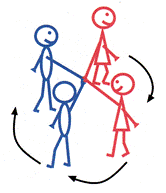 RH star |
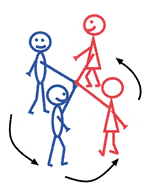 LH star |
|
|
STRIP THE WILLOW Top (1st) couple right hand turn 1 and 1/2 times and go to next person of the opposite sex (2nd cpl) Left hand turn this one to meet partner in the middle Right hand turn partner and on to the next person of the opposite sex (3rd cpl) Left hand turn this one to meet parftner in the middle Right hand turn partner and on to the next person of the opposite sex (4th cpl) Left hand turn this one to meet partner in the middle REPEAT this pattern until the end of the set is reached then half a right hand turn with partner to finish on own side at the end of the set |
 strip the willow |
||
|
SWING Partners face and give 2 hands, boy's R to girl's R and by's L to girl's L. Spin round to L (clockwise). This is the CROSS HAND SWING An alternative which is more under control and takes up less room is the ARM SWING where partners link R arms and spin to L (clockwise) There ar other possibilities such as using a BALLROOM hold or giving R elbow hold with L hand place |
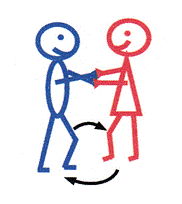 cross hand swing |
 arm swing |
|
|
THREAD THE NEEDLE All join hands to make a horseshoe open at the top. Top 2 girls raise joined hand to make an arch. Top boy leads all the othgers through the arch, turns right, round the back of the set and back up to places (Hands are kept joined all the time) This is usually repeated by the top boys arching and the top girl leading the others through |
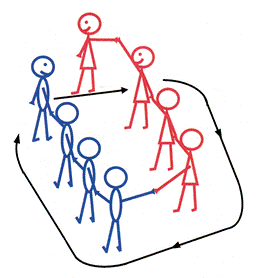 boys thread the needle |
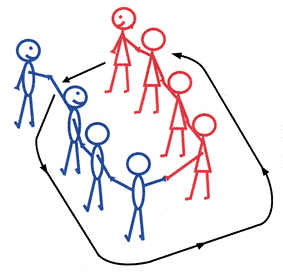 girls thread the needle |
|
|
TUNNEL In a longways set, all couple make a 2 handed arch with their partner Individulals as specified in the dance then dance through the tunnel of arches |
 tunnel |
||
|
TURNS For a RIGHT HAND TURN, partners face, give R hands and turn all the way round to original places For a LEFT HAND TURN, partners face, give L hands and turn all the way round to original places |
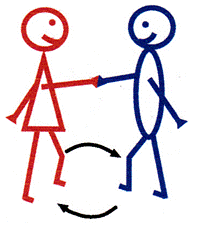 RH turn |
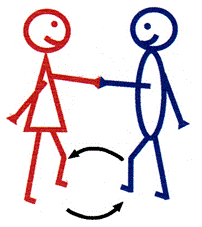 LH turn |
|
|
For a TWO HAND TURN partners give both hands and turn to the L (clockwise) to original places For a TURN SINGLE, individuals turn to the R on the spot taking 4 steps to turn |
 2H trurn |
||
|
WEAVE THE SET Individuals weave in and out down their own or the opposite line, sometimes taking the whole of their own line with them. Weaving can also be done by individuals round a circle or round a square set usually started by passing in front of partner first |
 boy(s) weave the girls' line |
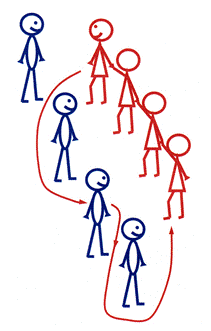 girl(s) weave the boy's line |
|